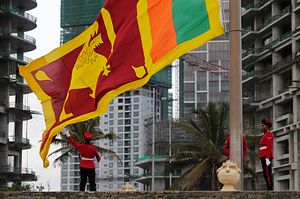On October 26, 2018, Sri Lankan President Maithripala Sirisena abruptly fired Prime Minister Ranil Wickremesinghe and replaced him with Mahinda Rajapaksa, a member of parliament and the former president. The move was unconstitutional and plunged Sri Lanka into unprecedented political turmoil.
The seven-week crisis paralyzed Sri Lanka’s government and weakened its economy. The ongoing geopolitical rivalries and big power contests for influence in the island were impacted as well. A year later, Sri Lanka continues to grapple with the ripple effects.
Upon being sacked, Wickremesinghe refused to resign on the grounds that the president had acted unconstitutionally. Wickremesinghe argued he still enjoyed the support of parliament. Thus, for a time, Sri Lanka was in the peculiar predicament of having two prime ministers concurrently.
In a bid to prevent Wickremesinghe from proving his majority on the floor of the House, Sirisena suspended parliament in late October and in November dissolved it. New elections were announced for early January. But, on December 13, the Supreme Court ruled that Sirisena’s dissolution of parliament was unconstitutional. Rajapaksa resigned and Wickremesinghe was reinstated as prime minister. The technical impasse came to an end, but its impact on Sri Lanka still lingers.

































